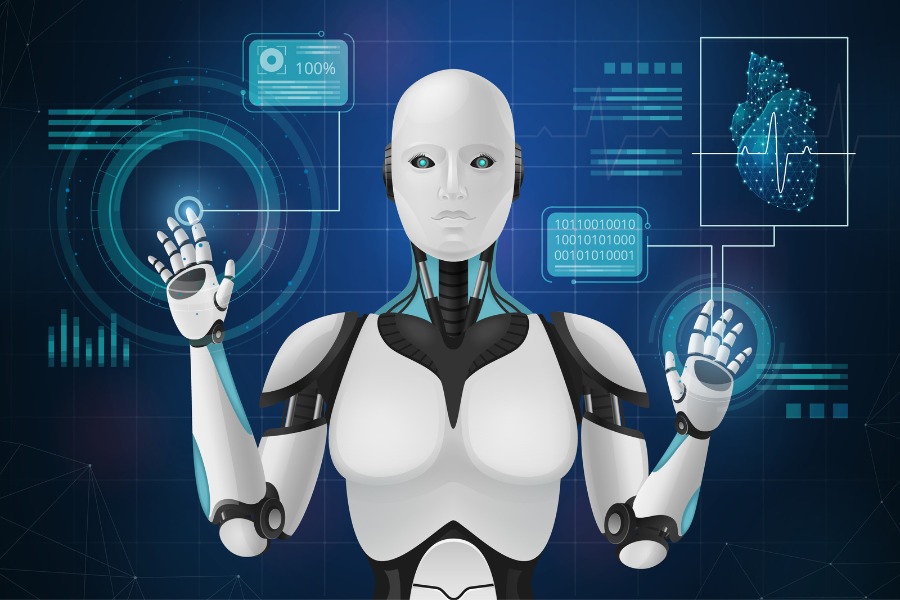
Artificial Intelligence Definition: Artificial Intelligence (AI) refers to the simulation of human intelligence in machines that are programmed to think and learn like humans. These machines can be designed to perform tasks that typically require human intelligence, such as understanding natural language, recognizing objects and images, making decisions, and solving problems.
One of the most common examples of AI is a virtual personal assistant, such as Apple’s Siri or Amazon’s Alexa. These virtual assistants use natural language processing (NLP) to understand and respond to voice commands, allowing users to set reminders, play music, and answer questions.
Another example of AI is image recognition technology, which allows machines to identify and categorize objects within images. This technology is used in a variety of applications, such as self-driving cars, security systems, and social media platforms that automatically tag people in photos.
AI systems can also be used for more complex tasks, such as playing chess or Go. In 1997, the chess-playing computer program Deep Blue defeated world chess champion Garry Kasparov in a six-game match. In 2016, AlphaGo, a program developed by Google’s DeepMind, defeated Lee Sedol, one of the world’s top Go players. These examples demonstrate how AI can be used to achieve superhuman performance in certain tasks.
There are two main types of AI: “weak” or “narrow” AI and “strong” or “general” AI. Narrow AI is designed to perform a specific task, such as image recognition or playing chess. General AI, on the other hand, is designed to perform any intellectual task that a human can. While narrow AI is becoming increasingly common, general AI is still in the realm of science fiction.
AI technologies are also classified into two types : Supervised learning and Unsupervised Learning. Supervised learning is a type of machine learning where an algorithm is trained on a labeled dataset to make predictions or take actions based on input data. The algorithm is presented with input-output pairs, and it must learn a mapping between inputs and outputs. For example, a supervised learning algorithm might be trained on a dataset of images of handwritten digits and their corresponding labels (i.e., the digits themselves). Once the algorithm has been trained, it can be used to recognize new images of handwritten digits.
Unsupervised learning, on the other hand, does not use labeled data. Instead, the algorithm must find patterns or relationships in the input data on its own. One example of unsupervised learning is clustering, where an algorithm groups similar data points together. Another example is dimensionality reduction, where an algorithm finds a lower-dimensional representation of the input data that captures the most important information.
AI research has been a hot topic for many years, and it is likely to continue to be so in the future. AI has the potential to revolutionize many industries, from healthcare to transportation, and it may also have a significant impact on society as a whole. However, it is important to note that AI also raises a number of ethical and societal concerns, such as job displacement and the potential misuse of AI technology. It is important to continue to study and understand the implications of AI as it continues to evolve.
Subscribe to my Newsletters if you want the most important crypto topics & coding tutorials delivered to your inbox every week.